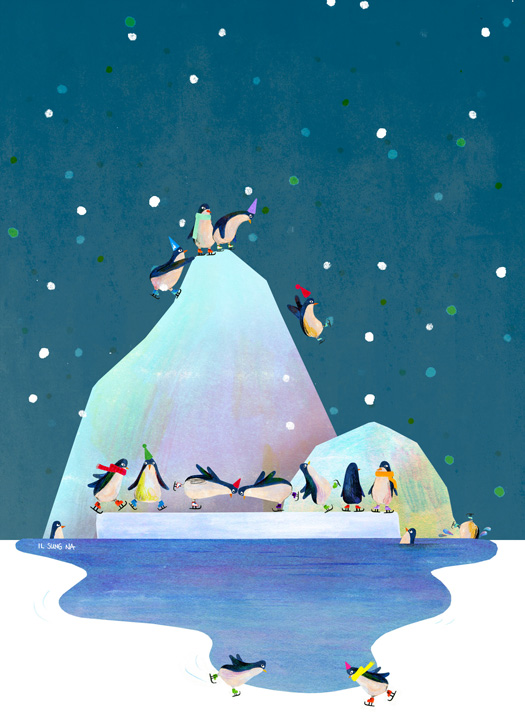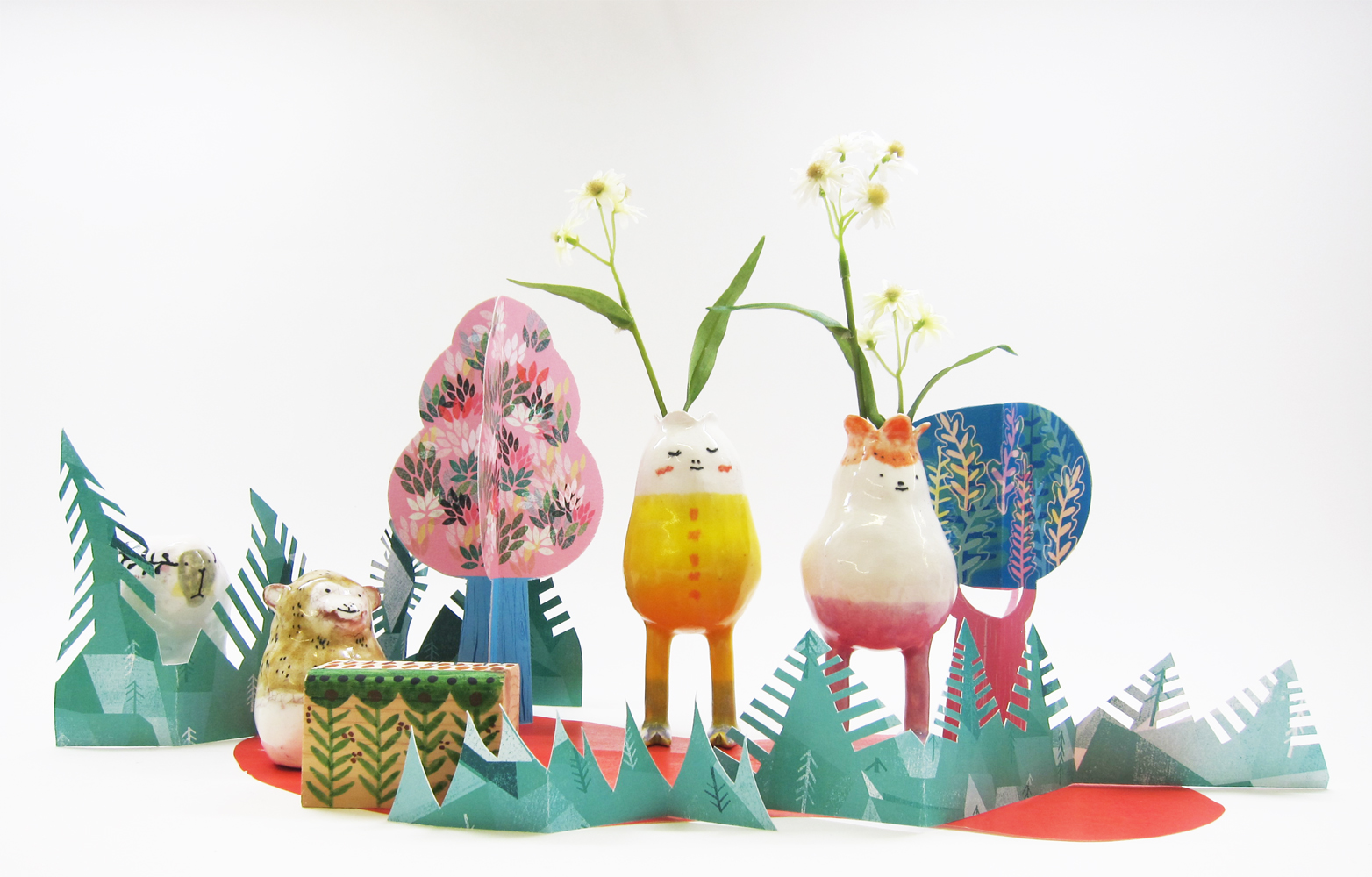Happy 2018 everyone! We're into the third week of the semester and although we're gearing up for a busy semester, we thought we'd take a look back on some of the projects that happened within the Illustration department last fall. Our second faculty feature is on Associate Professor and KCAI Illustration alum ('92) John Ferry. Seniors Jack Mied and Cam Kunke caught up with John recently to talk to him about one of the classes that he teaches in the fall, Color and Space, and what he loves about being an illustrator and educator.
Livestock Exchange, Kansas City #1
oil on panel, 11.25 x 13.25 inches, framed
What inspired you to pursue art? There is no “One” inspiration – it’s a series of - too may to name. I will say, growing up in Decatur, IL, I had a Frank Lloyd Wright home behind my house. My dad loved architecture and Wright, that was probably my first major influence. And my 1st grade teacher wrote on my report card “John draws the best cars in class.”
What is the most rewarding thing you experience as a teacher? Every time a student has a self discovery.
How has teaching influenced your practice? I learn from the students – all of them – that is a blessing.
sophomores Lauren Koluch (left) and Maddie Knaus (right) working on their 3x3s
3x3s and 4x4s in progress, Fall 2017
What is one of the most fulfilling things, for you, about being an artist? Being able to sit in my studio and paint, having the time to practice it on a regular basis, learning about myself through my work.
What is one of your favorite anecdotes about KCAI? Well, when I was a junior I was in a painting class in the illustration department. One day my professor was showing me “The Bay Area Figurative Art” book. He pointed out the scissor paintings by Richard Diebenkorn. I saw GOD in those scissors that day. I painted numerous bad paintings of scissors the rest of the day. That was the first book I purchased with a purpose. Not sure this is the anecdote you are looking for – but there it is.
Richard Diebenkorn
What is the purpose of the 3x3/4x4 project? To learn to really see & mix color, to overcome challenging obstacles, to build confidence, to surprise yourself.
sophomore Marco Defilio with his finished 3x3
sophomore Anh Le with his finished 4x4
What the focus behind pushing the sophomore to use oil rather than acrylic? I like oil better – I think it’s a medium that students are more afraid of than acrylic. It can be very messy and difficult to use. Once we de-stigmatize the medium, our confidence builds.
Which class do you feel most challenges your students? All, possibly figure drawing – the students would say the 4 X 4.
Did you expect to be a professor at your Alma matter? Yes.
Has being a father changed your goals as an artist? No. It’s added to the depth of my painting.
Since graduation how have you seen your work change? Learning and gaining confidence is a blessing. I enjoy so many more other artists’ works’ now. I appreciate more artists as I search. I see and feel growth in all areas. I like feeling like I’m learning.
How has has it stayed similar to what it used to be? Good question – I’m not sure.
What inspirations, outside the illustration community, influence your work? Reading – reading about artists’ work habits, work ethic. Reading to learn about myself. This is a gift I’ve given myself later in life.
New York x2 #3
oil on panel, 11 x 13 inches, framed
What has been one of the best things about being a professional illustrator? I’m a professional artist – and a student. Someday I’ll reach “Maslow’s Hierarchy of Needs” and become self actualized . . . until then, I still enjoy seeing my work in print. Back in 1996 I got my first review in the “Kansas City Star.” That same morning a man showed up at the gallery before it opening and purchased my first work as a professional. He pointed the the picture in the paper and said “I want that painting.” That was a special day and was very infectious – for good or bad. My father used to say to me – “success breeds success.”
What has been one of the worst things about being a professional illustrator? I hate the feeling of seeing work that had to be turned in (deadline), that doesn’t meet my expectations . . . not every work can be a masterpiece, but you sure feel more pressure when it’s for a client and going to be in print. To feel ashamed of your work is a bad enough feeling – when it’s printed it makes a bad sensation worse.
Can you bench press a bear? When I was a kid I bought a cub - I picked up that cub everyday until one day I was picking up a bear - I couldn't bench press it though.
What's your favorite sports team? I suspect you already know the answer - The 2016 World Champion Chicago Cubs - I never thought I'd be able to say that! I did think I would teach at KCAI though.
Thank you, John, for taking the time to talk to us about your class and career! John is currently represented at Blue Gallery in Kansas City.












